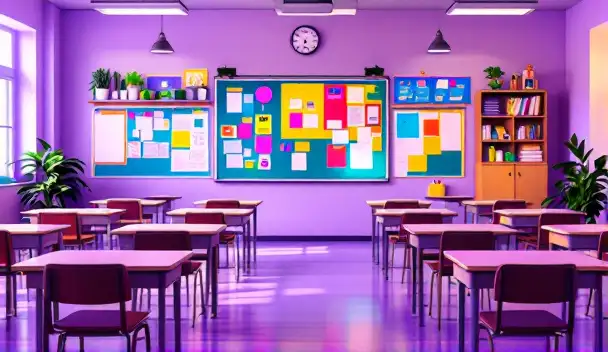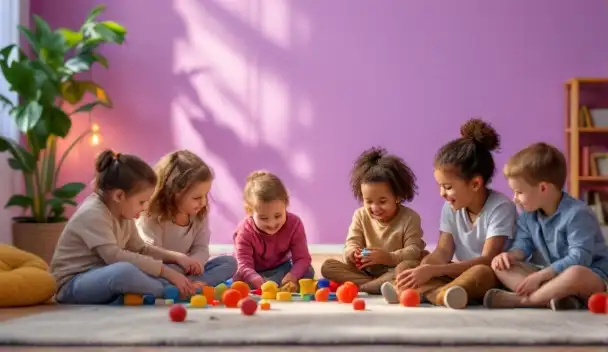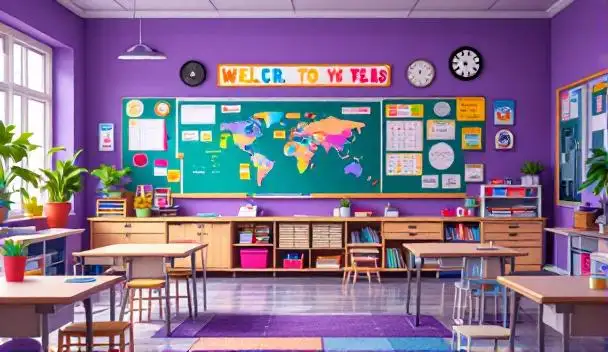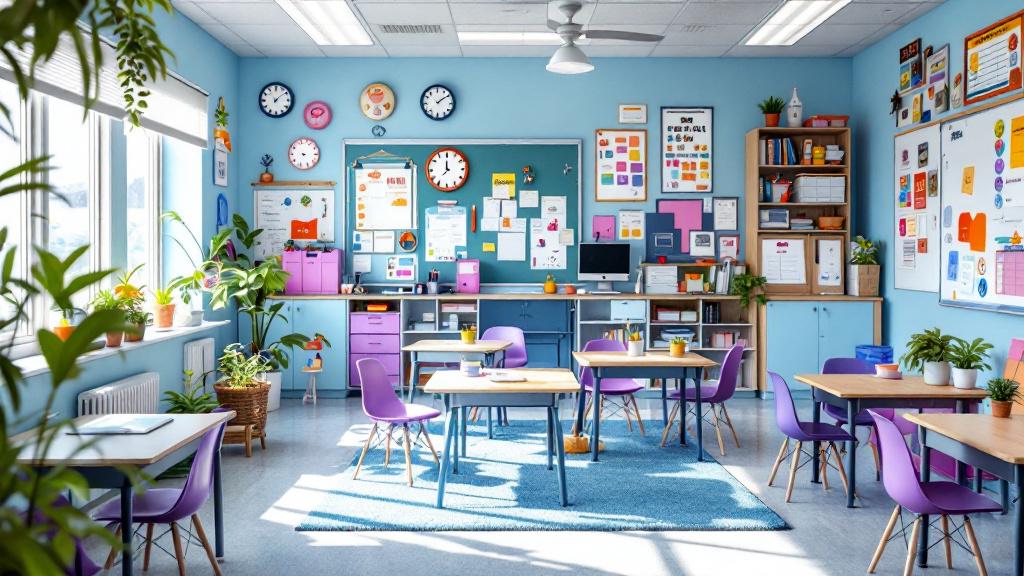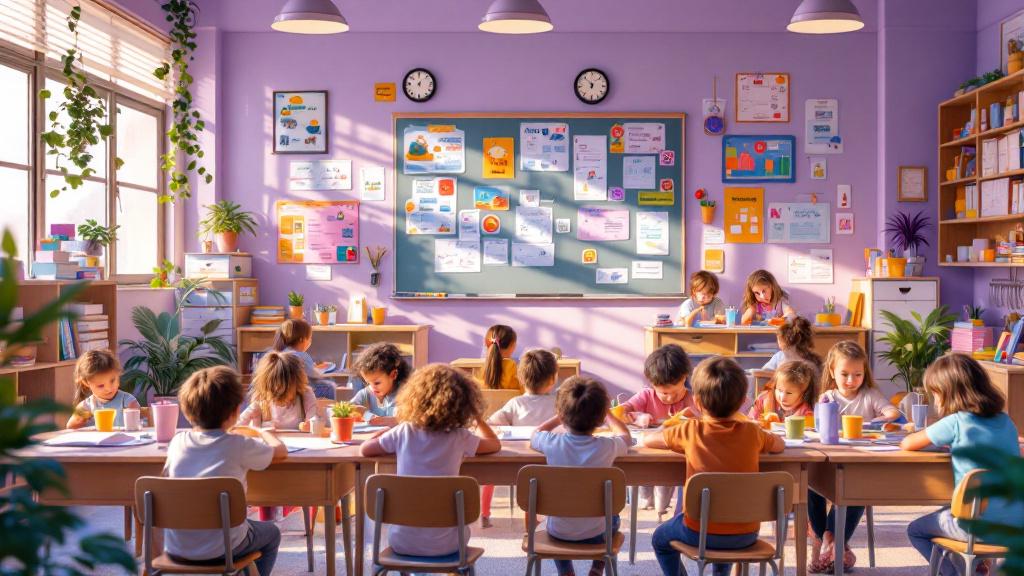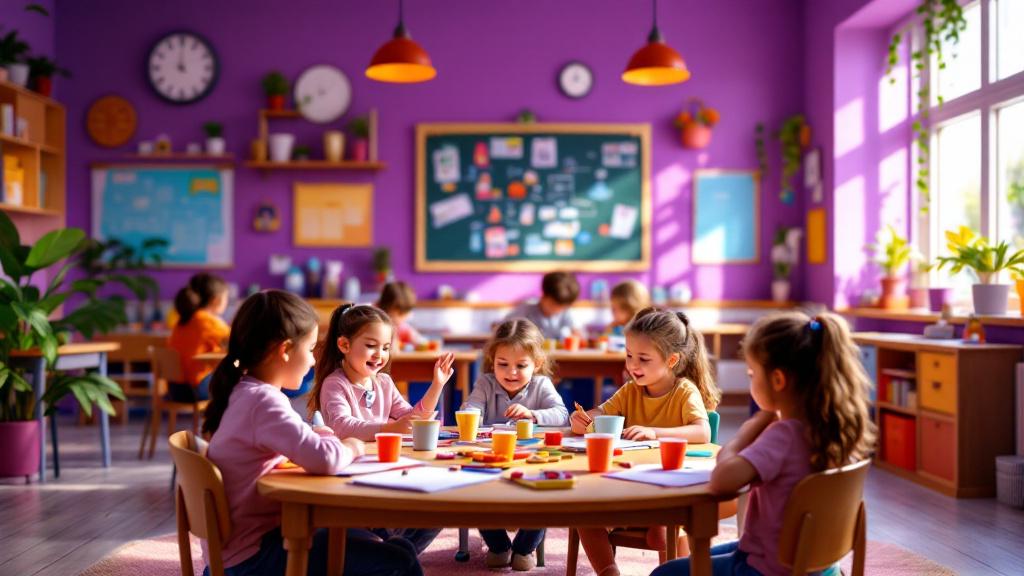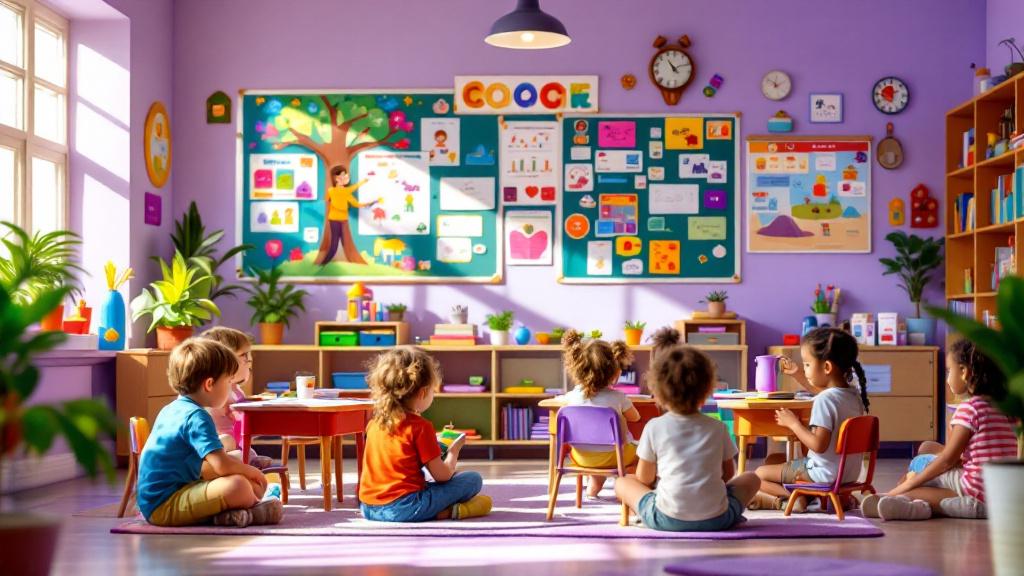Understanding the Importance of Social Skills in Education
Developing social skills in students is fundamental for fostering positive relationships, emotional regulation, and academic success. Schools play a critical role in teaching these skills through comprehensive programs and collaborative efforts involving educators, parents, and communities.
Core Components of Effective Social-Emotional Learning Programs
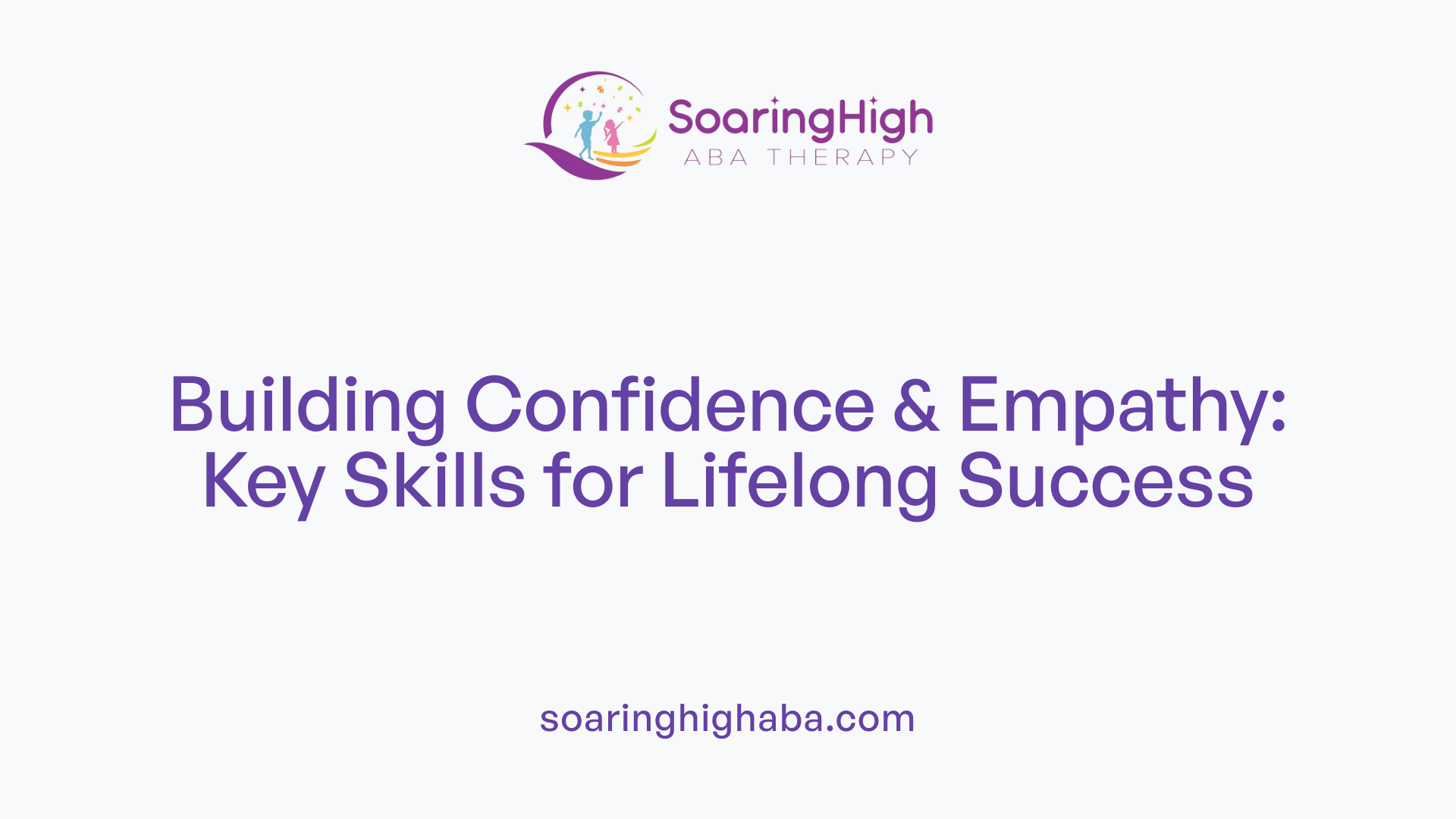 A well-rounded social-emotional learning (SEL) program integrates five essential areas that help students develop crucial skills for life and school success. These components include self-awareness, self-management, responsible decision-making, social awareness, and relationship skills.
A well-rounded social-emotional learning (SEL) program integrates five essential areas that help students develop crucial skills for life and school success. These components include self-awareness, self-management, responsible decision-making, social awareness, and relationship skills.
Self-awareness involves recognizing one's own emotions, thoughts, and values and understanding how they influence behavior. This helps students build confidence and a positive self-perception.
Self-management focuses on regulating emotions, managing stress, controlling impulses, and setting goals. Developing these skills encourages resilience and emotional stability.
Responsible decision-making includes analyzing situations, considering the consequences of actions, and making ethical choices. This prepares students to navigate complex social settings confidently.
Social awareness is about understanding, empathizing with others, and respecting diverse perspectives. It fosters compassion and promotes healthy interactions.
Relationship skills teach students effective communication, cooperation, conflict resolution, and how to build positive relationships.
Programs utilizing evidence-based curricula, like CASEL's 'Second Step,' provide structured learning across different age groups. These curricula often tie into broader school initiatives such as PBIS (Positive Behavioral Interventions and Supports), creating environments that support mental health and social development.
Engaging families and the community enhances the impact of SEL efforts. Training educators is also critical for consistent implementation. Using assessment tools helps monitor student growth and program effectiveness.
Incorporating these elements creates safe, inclusive settings that foster social competence, reduce bullying, and prepare students for future success in personal, academic, and professional life.
| Core Competency | Key Focus | Implementation Recommendations |
|---|---|---|
| Self-awareness | Recognizing one's emotions and values | Use mindfulness exercises and reflection activities |
| Self-management | Regulating emotions and behaviors | Incorporate stress management and goal-setting exercises |
| Responsible decision-making | Ethical and responsible choices | Scenario-based learning and ethical dilemma discussions |
| Social awareness | Empathy and respect for others | Group discussions and service projects |
| Relationship skills | Communication and teamwork | Role-playing, collaborative projects, conflict resolution |
Research supports that integrating these core areas connections promotes healthier social environments and improves student engagement and learning outcomes. Prioritizing evidence-based curricula and collaborative approaches ensures that SEL programs effectively nurture essential life skills.
Strategies to Cultivate Social Skills and Address Social Challenges
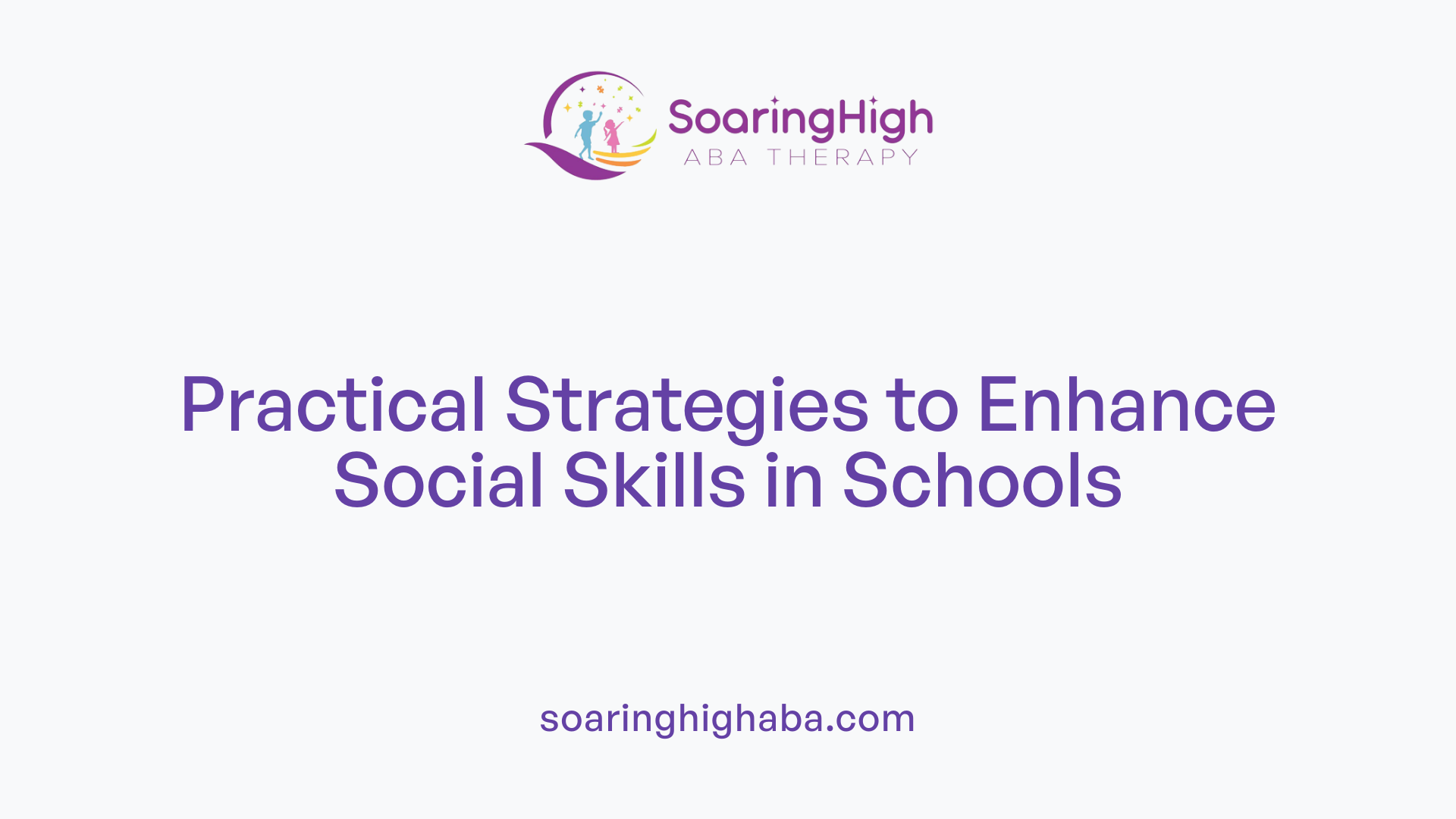
What strategies can schools use to address social skills challenges among students?
Strategies such as structured group activities, cooperative learning, and social skills practice through games or role-playing can help students develop social skills and address social challenges.
One effective approach involves implementing structured group activities. These activities provide opportunities for students to interact, share responsibilities, and learn teamwork. For instance, classroom projects, pair work, and small group tasks foster communication and cooperation.
Collaborative learning encourages peer-to-peer engagement and helps students practice conflict resolution, empathy, and active listening. When students work together on academic or social tasks, they develop crucial soft skills in a natural setting.
Engaging students in social skills practice through games and role-playing scenarios aids in translating learned skills into real-life interactions. Games like board games or social stories simulate social situations, allowing children to rehearse responses and behaviors in a safe environment.
Role-playing can be especially beneficial for addressing specific social challenges such as managing peer pressure or handling bullying. Students act out scenarios, receive feedback, and learn appropriate responses.
Incorporating these strategies fosters a supportive school environment where students improve their social competence, build confidence, and form positive relationships. Schools should combine these methods with targeted interventions and collaborate with parents and professionals to create comprehensive social-emotional learning programs.
Enhancing these skills not only helps manage social challenges but also promotes emotional resilience and better mental health, contributing to overall academic and personal success. Teachers and staff play a vital role in guiding and supporting students through these activities, ensuring every child learns and applies essential social skills.
Effective Classroom Methods for Teaching Social Skills
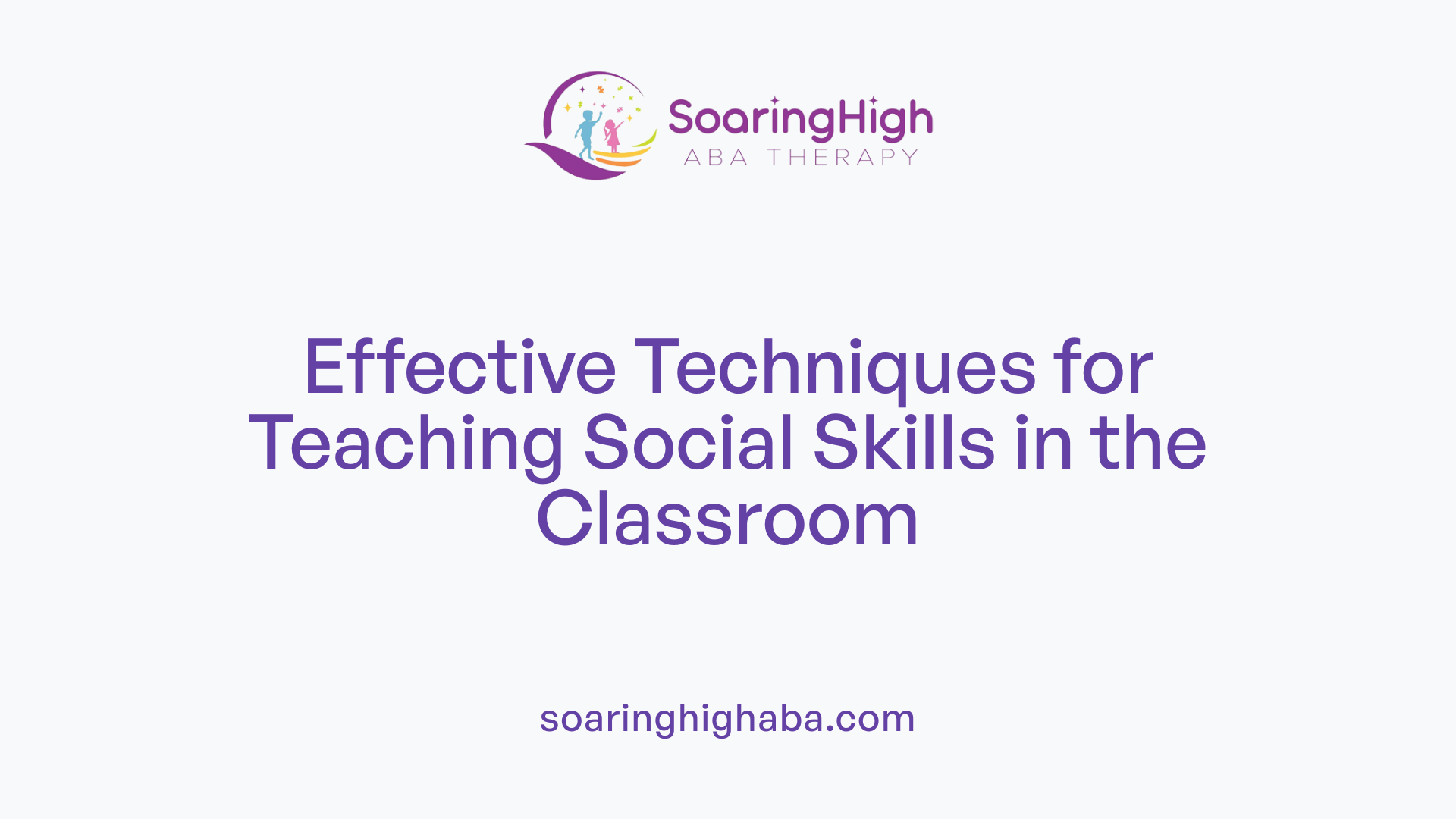
How can teachers effectively teach social skills in the classroom?
Teachers play a vital role in shaping students' social abilities. To be effective, they should start by explicitly instructing students on important social behaviors such as active listening, sharing, respecting personal space, and interpreting non-verbal cues. Using concrete supports like visual aids, charts, and prompts helps clarify these expectations and reminds students of appropriate behaviors.
Incorporating visual prompts, including picture schedules and social stories, supports students in understanding routines and social norms clearly. Structured activities like role-playing scenarios, social dramas, and group games provide safe environments for students to practice social interactions, develop empathy, and build confidence.
Modeling positive social behaviors is equally critical. When teachers demonstrate respectful communication, empathy, and conflict resolution, students tend to imitate these behaviors. Peer interventions, such as buddy systems or peer mentoring, encourage inclusive social participation and foster peer support.
Establishing consistent routines and predictable structures also aid social development. Visual routines and classroom rules help students understand expectations, reducing anxiety and promoting cooperation. For students with special needs, tailored supports and interventions ensure they can develop social skills within the classroom setting.
By combining direct teaching, visual supports, modeling, and structured routines, teachers can create an engaging and supportive environment. This approach benefits all students, especially those with social challenges or disabilities, fostering positive relationships and social competence overall.
Recognizing Signs of Social Skills Difficulties
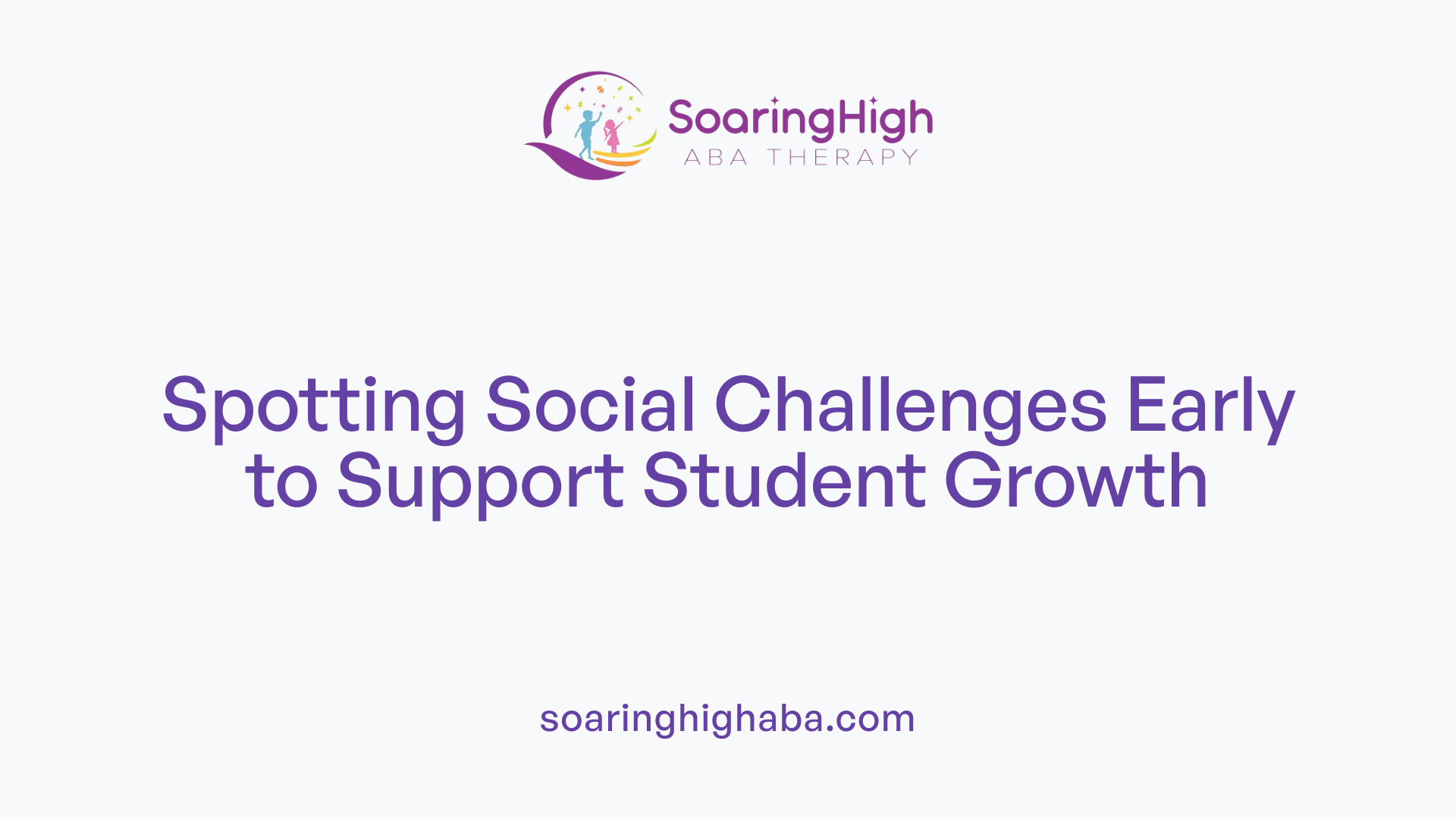
What are common signs of social skills difficulties that educators should recognize?
Educators play a crucial role in identifying students who may need support in developing social skills. Some common signs include challenges in interpreting social cues, such as body language, facial expressions, and tone of voice. Students with difficulty understanding these cues might misread others' intentions or feelings, leading to misunderstandings.
Additionally, students may struggle with turn-taking and sharing, which are vital for cooperative play and conversations. They might monopolize discussions, interrupt others, or have trouble understanding when it’s appropriate to speak or listen.
Noticing social withdrawal or isolation can also signal social challenges. These students may avoid group activities, have fewer peer interactions, or seem anxious about social situations.
Impulsivity and issues with self-control are common, especially among students with ADHD or executive functioning difficulties. Such students might react impulsively, blurt out answers, or have trouble managing emotions during social exchanges.
Language barriers can further complicate social interactions. Students who are non-native English speakers or have speech and language disorders may find it hard to express themselves or understand others, impacting their ability to build relationships.
Mental health concerns like anxiety or depression often influence social behavior as well. These students might display signs of distress, reluctance to participate, or excessive worry about peer acceptance.
Recognizing these signs early allows educators to provide targeted interventions, such as social skills training, counseling, or peer support, fostering a more inclusive and supportive classroom environment.
| Sign of Social Skills Difficulty | Description | Possible Underlying Factors |
|---|---|---|
| Misreading social cues | Difficulty interpreting body language, facial expressions, and tone | Autism spectrum disorder, social processing issues |
| Turn-taking and sharing issues | Struggling to share, interrupting, monopolizing conversations | Developmental delays, social anxiety |
| Social withdrawal | Avoidance of peer interactions, isolation | Anxiety, depression, peer rejection |
| Impulsivity and self-control issues | Reacting without thinking, difficulty managing emotions | ADHD, executive function challenges |
| Language barriers | Struggling with expression or comprehension | Language differences, speech disorders |
| Mental health concerns | Signs of anxiety or depression impacting social behavior | Emotional health issues |
Understanding these signs is essential for creating early intervention strategies and fostering positive social development in all students.
Interventions and Therapy for Social Skills Development
What treatment options or interventions are available for students with social skills deficits?
Students who struggle with social skills benefit from a variety of targeted interventions designed to promote social understanding and improve communication capabilities. Evidence-based practices are crucial in tailoring support to meet individual needs effectively.
One popular approach is Social Skills Training (SST), which involves structured programs teaching specific skills like perspective-taking, emotion recognition, and conversation initiation. These programs often include role-playing, peer interactions, and direct instruction.
Social stories and scripts are helpful tools that provide visual and narrative guidance on expected social behaviors. These are particularly effective for students with autism spectrum disorder (ASD) or those on the developmental spectrum, as they illustrate appropriate responses to social situations.
Behavioral techniques such as modeling and role-playing are essential. Teachers and therapists demonstrate desired behaviors, allowing students to imitate and practice them in safe environments. Reinforcement strategies, like praise or tokens, help motivate consistent practice.
In addition, social skills groups and social narratives involve peer-led activities or storytelling that foster understanding of social norms while encouraging students to share experiences and viewpoints.
Cognitive-behavioral strategies (CBT) are also utilized, especially for students who experience social anxiety. These approaches aim to modify negative thought patterns and develop coping skills for social interactions.
For students with communication challenges, augmentative and alternative communication (AAC) devices and methods can support expressive skills, allowing students to better participate in social exchanges.
Finally, integrating technology—such as computer programs, virtual reality environments, and social skills apps—offers engaging and adaptable opportunities for practicing social interactions.
Successful interventions involve collaboration among families, educators, speech-language therapists, and mental health professionals. This teamwork ensures a culturally sensitive, goal-oriented approach that fosters generalization of skills across settings and promotes long-term social competence.
Supporting Students with Learning Difficulties and Disabilities
How can schools support students with learning difficulties or disabilities in developing social skills?
Supporting students with learning challenges or disabilities requires tailored approaches that promote social development alongside academic growth. Schools often utilize structured social skills programs, such as the evidence-based Second Step curriculum, which teach students how to recognize emotions, respond appropriately in social situations, and develop self-regulation skills. These programs provide systematic lessons that help students understand social cues and improve their interpersonal interactions.
Creating an inclusive classroom environment is essential. A positive setting that fosters safety, respect, and genuine interest in each student's well-being encourages participation and helps build self-esteem. Teachers and staff should focus on promoting a culture of acceptance, where all students feel valued and supported.
Using specific strategies enhances social skills learning. Role-playing scenarios, social scripts, and peer-mediated activities allow students to practice appropriate behaviors in a structured context. Cooperative group work and team projects further develop collaboration and communication skills, helping students learn to work effectively with others.
Providing individualized support is crucial for addressing behavioral challenges. Patience, consistent routines, and targeted interventions help students feel secure and reduce anxiety or frustration. Collaboration with mental health professionals, such as school counselors or psychologists, can address underlying emotional or behavioral issues, supporting overall social-emotional health.
In addition, schools should focus on fostering awareness and reducing stigma related to disabilities. Highlighting students’ strengths through extracurricular activities and peer support groups promotes acceptance and helps integrate students socially. These activities also showcase diverse talents, encouraging a strengths-based approach.
Overall, a combination of tailored programs, inclusive practices, and collaborative efforts ensures that students with learning difficulties or disabilities develop vital social skills, facilitating their success in school and beyond.
| Support Strategies | Description | Purpose/Benefit |
|---|---|---|
| Social Skills Programs | Implement curricula like Second Step | Teach social responses and emotional regulation |
| Inclusive Environment | Foster safety, respect, and interest | Promote participation, build self-esteem |
| Role-Playing & Scripts | Practice social scenarios | Develop communication and confidence |
| Peer Support | Use peer-mediated activities | Facilitate social interaction and friendship |
| Individualized Support | Tailored routines and patience | Manage behavioral challenges |
| Collaboration with Professionals | Work with mental health experts | Address emotional and behavioral needs |
| Promote Acceptance | Highlight strengths and reduce stigma | Foster a culture of inclusion |
By integrating these strategies, schools can create a nurturing environment that supports every student's social and emotional growth, leading to improved overall well-being and future success.
The Role of Parents and Caregivers in Social Skills Development
How important is involving parents and caregivers in social skills development programs?
Parents and caregivers play a vital role in nurturing children's social skills, serving as primary educators and role models at home and within the community. Their active involvement can significantly enhance the effectiveness of school-based social-emotional learning initiatives.
At home, caregivers can practice social skills through everyday conversations, model respectful behavior, and reinforce positive interactions. For example, discussing emotions, encouraging sharing, and resolving conflicts calmly help children internalize these skills.
Effective communication with schools is also crucial. Maintaining regular contact with teachers, counselors, and support staff ensures that strategies are aligned and that children receive consistent guidance across environments. Participating in meetings or workshops focused on social skills helps caregivers stay informed and supportive.
Participation in extracurricular activities, playdates, and community events offers children opportunities to practice social skills in diverse settings. These activities promote teamwork, leadership, and empathy, extending learning beyond academic contexts.
Reinforcing social behaviors at home is equally important. Praising responsible behaviors, setting clear expectations, and providing opportunities for children to reflect on social experiences nurture self-confidence and emotional resilience.
Research demonstrates that children with involved caregivers tend to exhibit better social competence, higher self-esteem, and improved academic performance. Strong school-family partnerships create a unified approach to social skills development, providing consistent messaging and support.
In summary, engaging parents and caregivers actively in social skills programs creates a supportive environment that fosters positive relationships, emotional regulation, and social success—building a foundation for lifelong interpersonal skills.
For more insights, you can search for "Involving parents in social skills programs in schools" to find additional strategies and research findings.
Employing Evidence-Based Methods for Teaching Social and Emotional Skills
What are evidence-based methods for teaching social skills and emotional regulation?
Teaching social skills and emotional regulation effectively relies on scientifically supported approaches that promote consistent learning and real-life application. One foundational method is implementing structured curricula, such as social-emotional learning (SEL) programs, which systematically cover essential skills like emotion recognition, empathy, communication, and problem-solving.
Visual supports are crucial tools in this process. These include photographs, icons, and visual cues like the 'stoplight' visual—used for calming and self-regulation—which are particularly helpful for children with autism spectrum disorder (ASD) and other developmental differences. Visuals simplify complex emotional concepts, making them accessible and understandable.
Modeling and role-playing serve as practical teaching strategies. Teachers and peers demonstrate appropriate social interactions, while children practice these skills through simulated scenarios. Video modeling can be especially effective, as children observe and imitate positive behaviors repeatedly. Discrete trial training, used in some contexts, helps children learn specific social responses through structured repetition.
Behavior Skills Training (BST) is another evidence-based approach, incorporating instruction, modeling, rehearsal, and feedback. This cycle strengthens new skills and ensures students understand how to apply them in different settings. Reinforcing positive behavior with immediate feedback increases motivation and promotes mastery.
Fostering peer support is also valuable. Peer mentoring pairs more experienced students with peers needing additional guidance, encouraging social interaction and learning within real-world contexts. Additionally, social narratives—story-based tools describing appropriate social responses—and cooperative group activities provide ongoing opportunities for practice. These strategies promote a supportive environment where students can develop and generalize social and emotional skills beyond structured lessons.
Incorporating these research-supported methods into educational practices enhances students’ ability to manage emotions, build relationships, and navigate social situations successfully, leading to improved mental health and social connectedness.
Fostering a Culture of Social and Emotional Wellness
Creating a school environment that prioritizes social and emotional wellness involves implementing comprehensive SEL programs, engaging families, training staff, and fostering inclusive and supportive relationships. Recognizing early signs of social difficulties, providing targeted interventions, and collaborating across stakeholders significantly enhance students’ social skills and overall well-being. A sustained, systemic approach ensures that social-emotional development remains central to educational success, preparing students to thrive both academically and socially throughout their lives.
References
- Navigating Social Challenges at School - Child Focus
- Social Skills for Special Education Students
- [PDF] Supporting Child and Student Social, Emotional, Behavioral, and ...
- Addressing Social-Emotional Needs: Back to School Edition
- 9 Ways to Teach Social Skills in Your Classroom | Reading Rockets
- Promoting School-Age Children's Social Skills and Emotional ...
- CASEL: Advancing Social and Emotional Learning






































